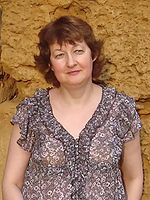Difference between revisions of "Shabalina 2013 Abstract IOC79"
Marte Verena (talk | contribs) |
|||
| Line 16: | Line 16: | ||
|organism=Mouse | |organism=Mouse | ||
|tissues=Heart, Skeletal muscle, Liver | |tissues=Heart, Skeletal muscle, Liver | ||
|preparations=Isolated | |preparations=Isolated mitochondria | ||
|enzymes=Complex I, Complex II; | |enzymes=Complex I, Complex II;succinate dehydrogenase, Complex III, Complex IV; Cytochrome c Oxidase | ||
|injuries=RONS | |injuries=Oxidative stress;RONS | ||
|diseases=Aging; senescence | |diseases=Aging;senescence | ||
|topics=Inhibitor, mt-Membrane potential | |topics=Inhibitor, mt-Membrane potential | ||
|couplingstates=LEAK, OXPHOS, ETS | |couplingstates=LEAK, OXPHOS, ETS | ||
|substratestates=CI, CII, CIII, CI | |substratestates=CI, CII, CIII, CI&II | ||
|link= | |link= | ||
|high-resolution_respirometry= | |high-resolution_respirometry= | ||
Revision as of 15:39, 10 February 2015
| Shabalina IG (2013) Enhanced Complex I but low Complex II substrate-derived ROS production rates in mice, prematurely aging due to enhanced mitochondrial DNA mutation rate. Mitochondr Physiol Network 18.07 |
Link:
Shabalina IG, Edgar D, Gibanova N, Cannon B, Nedergaard J (2013)
Event: IOC79
Mitochondrial DNA (mtDNA) mutations and reactive oxygen species (ROS) production are implicated in mitochondrial disease and in the aging process. The mode of ROS production and defence against ROS are here examined in mice accumulating a high level of mtDNA mutations, the mtDNA mutator mice. We analysed ROS production in parallel to content of mitochondrial proteins, level of membrane potential, oxidative phosphorylation, proton leak kinetics and spontaneous and Ca2+-inducible permeabilisation in isolated mitochondria from heart, liver and skeletal muscle of mtDNA mutator mice. We used Complex I and Complex II substrates to examine both forward and reverse electron transports, and respiratory chain inhibitors to determine the sites and mode of ROS production. In isolated mitochondria from mtDNA mutator mice ROS production from reverse electron transport was dramatically decreased whereas ROS production from forward electron transport was increased in isolated mitochondria from mtDNA mutator mice. This pattern of ROS production was associated with low membrane potential and low level of subunits of Complex I and IV of the mitochondrial respiratory chain. When liver or kidney homogenates were exposed to ambient oxygen pressure, formation of lipid peroxidation products was increased in mtDNA mutator mice. Liver tissue lysate also had high level of protein carbonyls and 4-HNE adducts. Thus, low ROS production under reverse electron flow conditions does not correlate with oxidative damage and may not be of physiological relevance, whereas an increased ROS production from forward electron transport may underlay the manifestations of premature aging observed in the mtDNA mutator mice.
• Keywords: mitochondria, heart liver and skeletal muscle, mtDNA mutation, mitochondrial ROS production, membrane potential
Labels: MiParea: mtDNA;mt-genetics, Genetic knockout;overexpression Pathology: Aging;senescence Stress:Oxidative stress;RONS Organism: Mouse Tissue;cell: Heart, Skeletal muscle, Liver Preparation: Isolated mitochondria Enzyme: Complex I, Complex II;succinate dehydrogenase, Complex III, Complex IV; Cytochrome c Oxidase"Complex IV; Cytochrome c Oxidase" is not in the list (Adenine nucleotide translocase, Complex I, Complex II;succinate dehydrogenase, Complex III, Complex IV;cytochrome c oxidase, Complex V;ATP synthase, Inner mt-membrane transporter, Marker enzyme, Supercomplex, TCA cycle and matrix dehydrogenases, ...) of allowed values for the "Enzyme" property. Regulation: Inhibitor, mt-Membrane potential Coupling state: LEAK, OXPHOS, ETS"ETS" is not in the list (LEAK, ROUTINE, OXPHOS, ET) of allowed values for the "Coupling states" property.
The Wenner-Gren Institute, The Arrhenius Laboratories F3, Stockholm University, SE-106 91 Stockholm, Sweden
